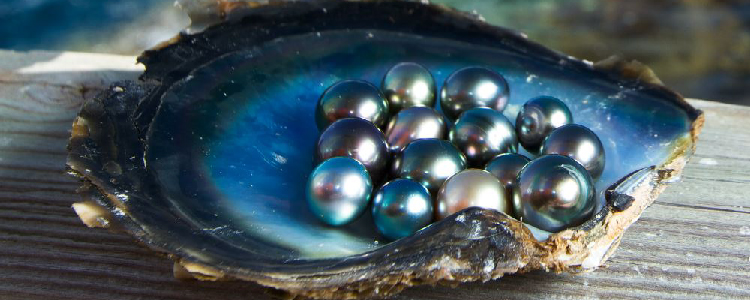Pearls have always been a classy addition to any occasion, whether they are pearl earrings, pearl necklaces, pearl bangles or even pearl watches. For that matter, pearl jewellery has always been worn with pride. Some even equal pearls with diamonds, and prefer them better than the expensive diamonds.
Table of Contents
How Do Pearls Get Their Beautiful Colours?
Here is the ultimate guide to different colours of the pearl and how to choose the right one for you. Pearls come in an exotic variety of colours, from classic white to exquisite violet! These colours are often influenced by the colour of the mollusc’s lip, (outer part of the shell), the kind of oyster, the thickness and the number of layers of nacre. ) Nacre is a transparent substance secreted by the oyster which later transforms into a pearl.) The mollusc’s golden lip influences the colour of South Sea pearls which range from white to gold.
In the case of Tahitian pearls, the colour is influenced by that of the oyster’s outer shell. The cultured Tahitian pearls inherit their grey hues from the oyster. These oysters do not produce white pearls whereas others rarely produce a different coloured pearl.
The Role of Nacre in the Formation of Colours
Nacre layers play a prime role in the formation of the pearl. Natural pearls are expensive and rare to find and comprise concentric layers of nacre surrounding a potentially microscopic original irritant, like a piece of sand. Whereas cultured pearls are made from human intervention by introducing a shell nucleus, and permitting a couple of nacre layers to form around it.
Thicker the nacre, richer the pearl’s colour, more the iridescence. Thin nacre usually makes for a milky-appearing pearl that has few overtones. The pearl’s iridescence is due to the overlapping of translucent nacre layers.
Conchiolin Factor
Another method by which pearls get their colours is by an organic substance called conchiolin which is like glue. The conchiolin secretes microscopic pigments that also influence the hue of the pearls. They are natural glue that holds together the crystalline aragonite layers together. The aragonite layers make up the prismatic layers of the pearl. When white light strikes and penetrates the surface of the pearl, it is refracted back at the viewer in its entire spectrum. Hence the colours red, orange, yellow, green, blue, violet. The phenomenon influences the pearl’s overtones and colours that are visible over the body colour of the pearl.
Does Colour Affect the Cost?
The colour of the pearl may not necessarily affect the cost but the more uniform the pearl colour, the more valuable it is. In the past, natural black pearls were considered to be very rare and now due to cultured Tahitian pearls, they have become easy to obtain. Natural white pearls are now considered to be more valuable than Tahitian pearls.
Whatever the colour might be, if you find the right size and have the attitude to flaunt your pearl jewellery, you can easily win the show. To find the right pearl jewellery, check out our other blogs.

